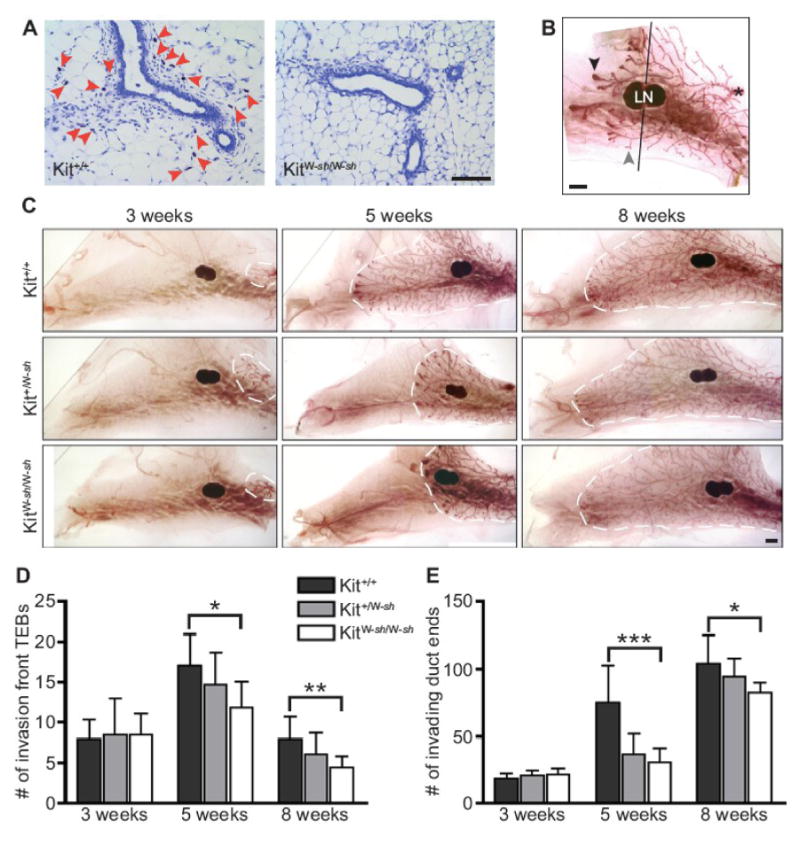Figure 2.

Mice lacking mast cells have defective mammary gland branching. A) Mast cells are present in wild-type mammary gland but absent in W-sash mutant mice. Frozen 5 μm sections of abdominal mammary glands from 5-week-old littermates stained with Toluidine blue. Red arrowheads indicate mast cells. Scale bar = 100 μm. B) Analysis of carmine-stained mammary gland whole mounts required counting of TEBs (black arrowhead) and duct ends (gray arrowhead) past the mid-lymph node (denoted by line, LN=lymph node). The nipple is indicated by an asterisk. Scale bar = 1 mm. C) Comparison of carmine-stained whole mounts of left abdominal mammary glands from W-sash wild-type, heterozygote, and mutant mice at 3, 5 and 8 weeks of age. Scale bar = 1 mm. The edge of mammary gland growth is outlined by a white dotted line. D) Counts of TEBs past the mid-lymph node from whole mount analysis reveal that mast cell-deficient mice have fewer TEBs in the pubertal mammary gland (n=8 mice/genotype/group; ANOVA values: *5 weeks, P=0.038; **8 weeks, P=0.024). E) Counts of duct ends (primary and secondary branching) past the mid-lymph node from whole mount analysis reveal that mast cell-deficient mice have fewer duct ends in the pubertal mammary gland (n=8 mice/genotype/group; ANOVA values: ***5 weeks, P=0.0003; *8 weeks, P=0.0325). All error bars represent standard deviation.
